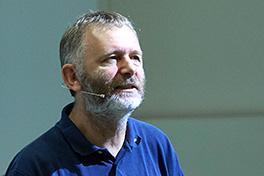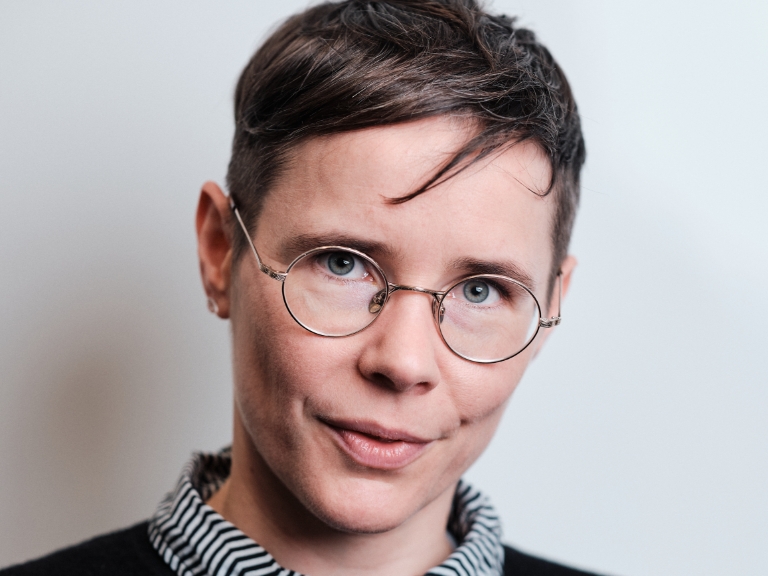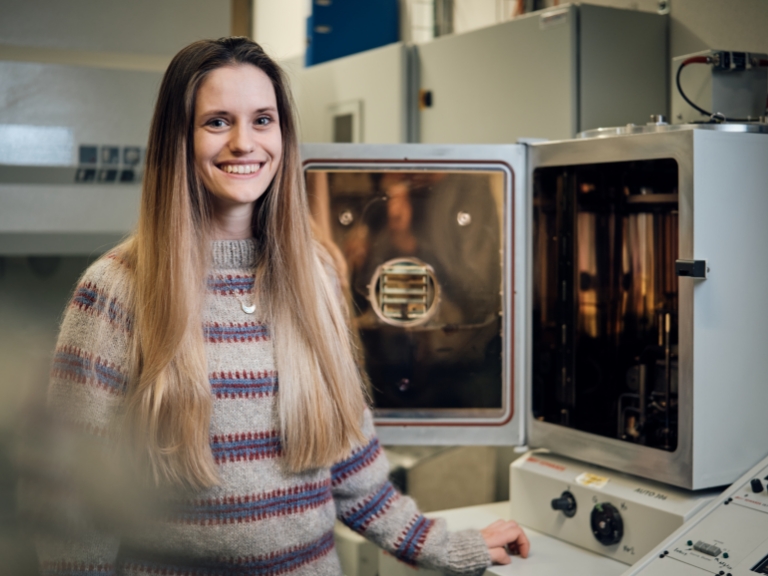Space research
Making science tangible with art
How do you make the tectonic development of the planet Mercury tangible with a piece of paper? For planetary scientist Liliane Burkhard, the answer is clear: with the means of art.
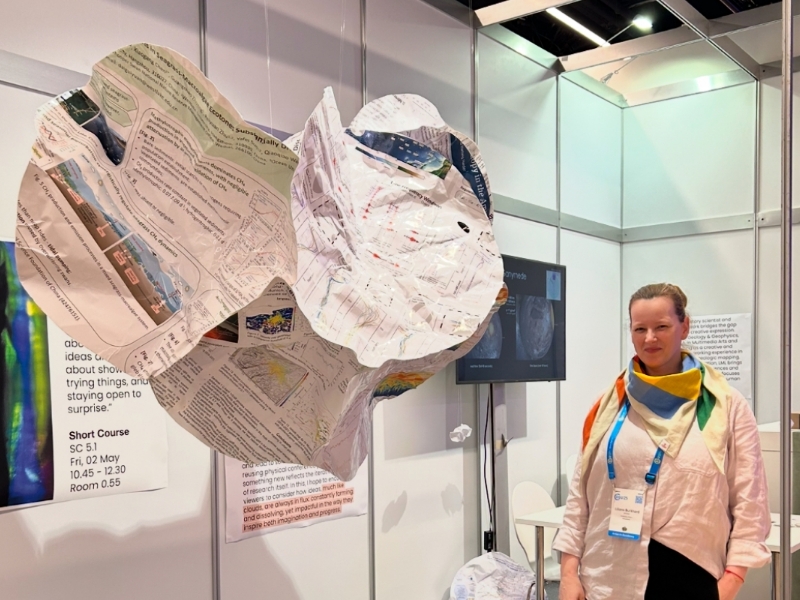
Liliane Burkhard breaks with convention. While she works at the Institute of Physics in the Space Research and Planetary Sciences Divison on the BELA space instrument of the ESA/JAXA BepiColombo mission, she thinks not only in terms of physical laws and data sets, but also in terms of artistic forms and structures. The planetary scientist is also a visual artist.
With this unique profile, Burkhard was invited as Artist in Residence by the European Geosciences Union (EGU) to its General Assembly 2025, which took place last week in Vienna. The EGU is the leading organization for earth, planetary and space research in Europe. Around 15,000 researchers attend the General Assembly each year. There, she created an artistic installation and offered an interactive workshop. Liliane Burkhard explains: "I wanted to show how science can be made tangible through art."
Building bridges between art and science
Born in Switzerland, she studied geology and geophysics in Hawaii at the University of Hawaiʻi at Mānoa, where she also completed her doctorate before becoming an instrument scientist for the BELA laser altimeter in Bern. BELA was designed and built at the Physics Institute of the University of Bern and is on board the BepiColombo space probe on its way to Mercury, where it will arrive at the end of 2026.
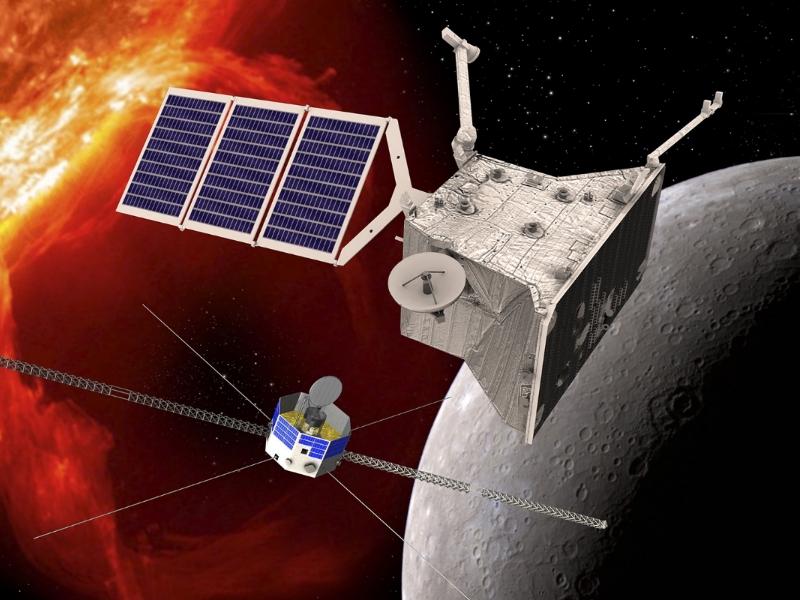
Burkhard explains: "A laser altimeter is an instrument that uses laser pulses to measure the distance between a space probe and the surface of a planet, in this case Mercury. Because we know the position of the space probe with great accuracy, the differences in height on the planet's surface can be calculated from these distance measurements. In principle, we can use BELA to create a 3D image of the topography."
The fact that she works at one of the world's leading universities in the field of space research fills her with pride: "What we do in our department is truly cutting-edge technology! I am thrilled to be able to work on such an important project as BepiColombo."
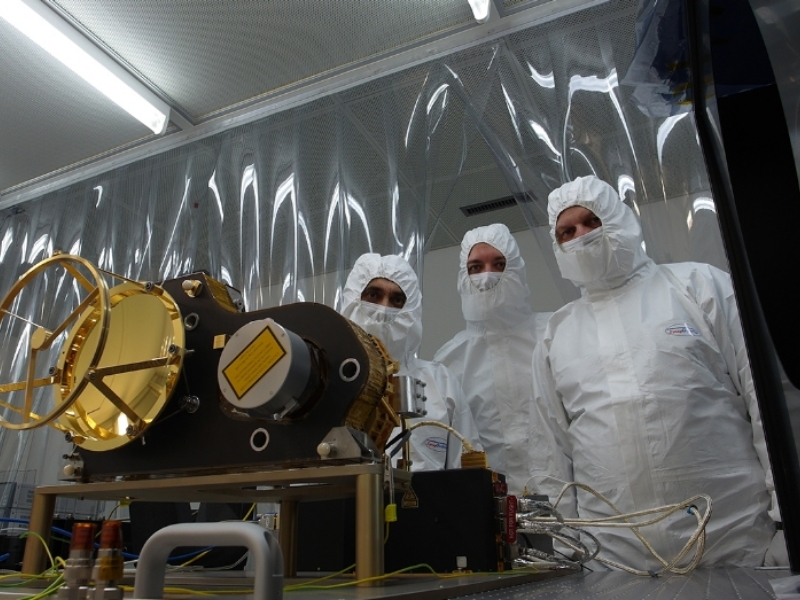
Even before her studies in geology and geophysics, Burkhard completed a Bachelor of Arts in Multimedia Arts in Zurich and London and then worked for ten years as a designer and producer for various media projects. "I worked in the fields of image, video and sound editing, 3D animation, web design and game design, among others."
In her artistic work, Burkhard now combines her experience in the multimedia sector with her experience in analyzing space images, geological mapping and scientific data illustration. In this way, she builds a bridge between analytical and creative expression, including large-scale installations. The fact that she was invited to the EGU General Assembly as Artist in Residence is a great honor for her. After all, several hundred people apply for the program every year.
What knowledge and clouds have in common
At the EGU General Assembly, Burkhard created the floating sculpture "Clouds of Insights" from conference posters that would otherwise have ended up in the bin. For Burkhard, paper is more than just a carrier of scientific results - for her, it is "both a material and a space for thought".
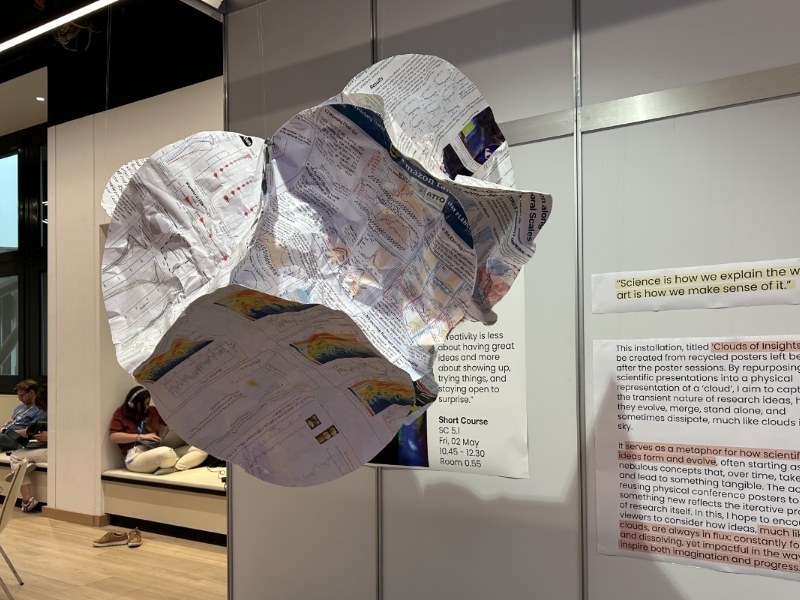
The paper artwork invites us to reflect on the momentary nature of knowledge. It visualizes the constantly changing nature of scientific ideas - similar to clouds that form, condense and can dissolve again. Burkhard says: "Knowledge is never rigid, but in constant motion. Like clouds in the sky, scientific knowledge also forms and changes, building on each other and sometimes dissolving again."
“Like clouds in the sky, scientific knowledge also forms and changes.”
Liliane Burkhard
Burkhard captures this dynamic in her floating artwork and gives it a physical presence, so to speak. The reuse of the conference posters also symbolizes the idea of sustainability, which is also becoming increasingly important in science.
Making scientific theories understandable for oneself and others
Burkhard also taught an interactive workshop for the scientists attending the conference. Entitled "Unlocking Creativity Through Paper Sculptures", she offered the researchers an unusual approach to scientific thinking by demonstrating how the tactile experience of paper folding and shaping can make the complex processes of planetary deformation, for example, tangible.
"The kneading and layering of the paper, the formation of folds and fractures - all this reflects the dynamic forces that act on planets and shape their surfaces. In this way, an abstract theory becomes more understandable through a sensory experience," explains Burkhard. Understanding grows through the act of creation. "The creative approach not only promotes an understanding of complex processes, but also encourages innovative solutions and new perspectives."
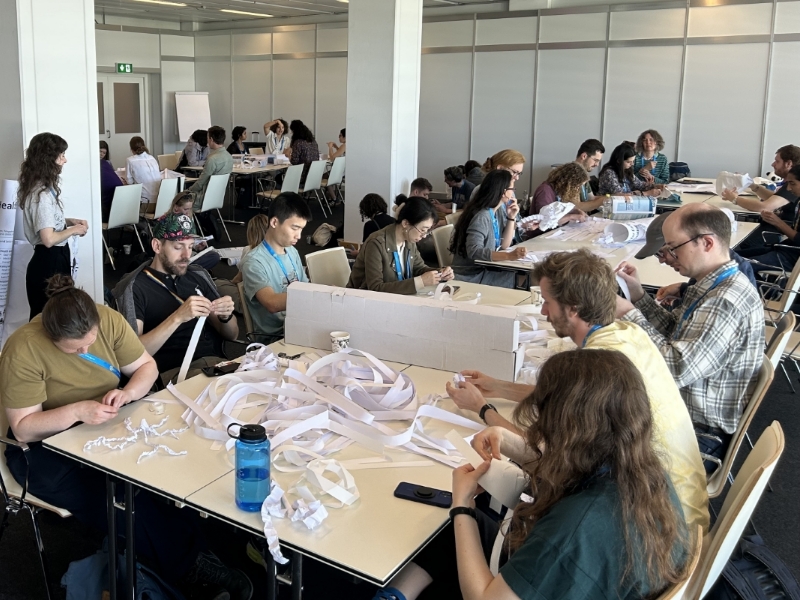
She continues: "The participants learned how to create three-dimensional models and communicate scientific concepts visually." Burkhard is convinced that it is becoming increasingly important to know how to communicate science and how to present something so that it is understood and visually appealing. It offers a way to make scientific knowledge more accessible to a broad audience and also to build a bridge from science to politics.
Creativity and curiosity as the core of scientific excellence
And what does Nicolas Thomas, who recruited Burkhard to his team in 2023, have to say about her artistic work? The Professor of Experimental Physics has a different concept of excellence than the sheer number of publications, Burkhard knows: "Nicolas is always looking for people who can think 'outside the box'. In other words, people who not only excel and are focused in one area, but who can also think creatively, innovatively, curiously and with a willingness to take risks. Who can look for unconventional solutions when something comes their way." Burkhard is convinced that her artistic practice enables her to do just that in her scientific work.
“Both art and science thrive on questioning the status quo and thinking in new ways.”
Liliane Burkhard
As both an artist and a scientist, Burkhard is motivated by her desire to understand the world. Both art and science thrive on questioning the status quo and thinking about new things. Burkhard says: "Science is how we explain our world, art is how we make sense of it. Science shows us the world as it is, art shows us how we can understand it for ourselves. You could also say that art is how we translate the world."
About the person

Dr. Liliane Burkhard works as a geophysicist and planetary geologist at the Physics Institute of the University of Bern. She is currently studying the geological development of the planet Mercury and is preparing for the evaluation of the BELA laser altimeter data from the BepiColombo mission, which is expected in the coming years after the arrival of the probe. At the same time, she is also investigating the icy moons of the gas planets and researching the influence of tidal forces on tectonic processes, especially on Ganymede and Titan. On Earth, she used InSAR data to analyze the ground deformation of Kīlauea volcano in Hawaiʻi and conducted studies on earthquakes and stress accumulation along the San Andreas Fault in California. In addition to her research, she combines science and art in interdisciplinary projects.
Bernese space exploration: With the world’s elite since the first moon landing
When the second man, "Buzz" Aldrin, stepped out of the lunar module on July 21, 1969, the first task he did was to set up the Bernese Solar Wind Composition experiment (SWC) also known as the “solar wind sail” by planting it in the ground of the moon, even before the American flag. This experiment, which was planned, built and the results analyzed by Prof. Dr. Johannes Geiss and his team from the Physics Institute of the University of Bern, was the first great highlight in the history of Bernese space exploration.
Ever since Bernese space exploration has been among the world’s elite, and the University of Bern has been participating in space missions of the major space organizations, such as ESA, NASA, and JAXA. With CHEOPS the University of Bern shares responsibility with ESA for a whole mission. In addition, Bernese researchers are among the world leaders when it comes to models and simulations of the formation and development of planets.
The successful work of the Department of Space Research and Planetary Sciences (WP) from the Physics Institute of the University of Bern was consolidated by the foundation of a university competence center, the Center for Space and Habitability (CSH). The Swiss National Fund also awarded the University of Bern the National Center of Competence in Research (NCCR) PlanetS, which it manages together with the University of Geneva.
Subscribe to the uniAKTUELL newsletter

Discover stories about the research at the University of Bern and the people behind it.
